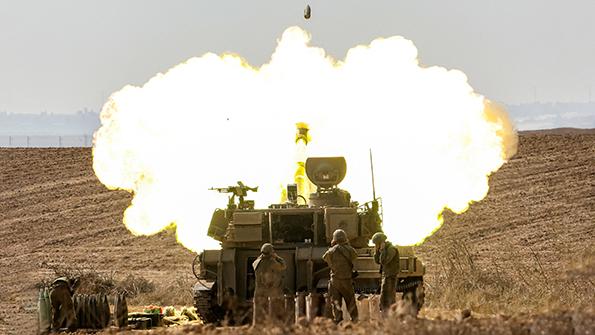
The Hamas invasion of Israel and Israel’s declaration of war have raised a series of new scenarios for defense analysts and planners to consider.
Israel’s response will be different than in prior conflicts with Hamas and may be even more visceral than the U.S. reaction after the terrorist attacks on Sept. 11, 2001. The U.S. responded to the 9/11 attacks with an invasion of Afghanistan in 2001 to overthrow the Taliban and attempt to capture al-Qaida leadership, and it invaded Iraq and began a wider war on terror in 2003 under the suspicion that Iraq had hidden nuclear capabilities.
This is how some may see what flows from the initial Oct. 7 attack by Hamas. Israel will seek to destroy Hamas, but it also will embark on a path to reset its security environment. That could include eliminating Hezbollah as a threat, annexing the West Bank and then attacking Iran to punish and deter it from threatening Israel. Of course, Hezbollah could act on its own and attack Israel without provocation, as might Iran. Iraq’s decision to launch ballistic missiles against Israel after the start of Operation Desert Storm in 1991 is an example of how Hezbollah and Iran might behave.
It may be sage, however, to view these as a series of events that will not happen all at the same time or may not happen at all—at least after the initial campaign to eliminate Hamas—and to prepare for more stressful scenarios.
One question is how long a campaign to eliminate Hamas in Gaza will last. History shows a wide range in the length of major urban campaigns, and not all are like Gaza. At one extreme is the battle U.S. forces fought against Iraq in Baghdad in 2003. It lasted six days. Several urban battles that might be similar to Gaza in World War II and the Vietnam War lasted a month or less. Operation Cast Lead during which Israel made limited incursions into Gaza in 2008-09 lasted 21 days. At the more extreme end of the scale is the battle fought in Mosul, Iraq, in 2016-17, which went on for approximately 10 months.
Israel will want to bring the operation to a close as quickly as possible. Hamas will not have resupply, and Israel cannot afford high Palestinian civilian casualties, which would erode global support and raise the risk that Hezbollah and/or Iran would act or that relations with other Arab states would deteriorate.
In this scenario, demand for military products likely will be limited to surges of precision guided weapons, aircraft and helicopter rotatable parts and ammunition. There then comes the question of what Israel does with Gaza after the campaign. It cannot just withdraw and expect a city of 2 million people to recover quickly. There will be a longer-term cost of governing Gaza, both in terms of security forces and government resources.
A larger-scale war would have a far greater impact on global defense. Despite threatening to do so, Hezbollah might not choose to intervene and attack Israel. Lebanon is in dire straits economically, and an Israeli response could be far more damaging to Lebanon than the 2006 war was. Hezbollah and Iran might also weigh the weakened capacity of Russia to support the Assad regime in Syria.
However, Hezbollah has a far larger rocket and missile inventory than it did during the 2006 war. A report published by the Center for Strategic and International Studies in 2021 estimated Hezbollah has 130,000 rockets and missiles now, compared with 15,000 on the eve of the 2006 war. Hezbollah probably also has been observing the use of small uncrewed aircraft systems by Ukraine and Russia, which could add to its ability to inflict damage on Israel.
Israel has been keenly aware of this threat, and its Iron Dome has proven effective in earlier conflicts with Hamas. However, some batteries may have been overwhelmed by the far larger initial salvos Hamas fired on Oct. 7.
A war with Iran would be conducted by air and missile forces but would raise the same problems if Hezbollah and Iran were to coordinate their attacks. There may be 10-15 key critical infrastructure targets in Israel that would impose severe costs on Israel if damaged or destroyed. Iran could also lash out and attempt to hit crucial targets in other countries in the region.
A broader war in the Middle East cannot be ruled out, and its opening days may be as abrupt and chaotic as Oct. 7-9. Russia’s large-scale invasion of Ukraine marked a significant change in global defense spending. A base case scenario is that Israel will seek to destroy Hamas and the campaign will be limited to Gaza. Still, more thought and preparation should be put into what a broader war could entail for the U.S. and European defense industrial bases that are already straining to meet Ukraine’s demands.
The views expressed are not necessarily those of Aviation Week.





